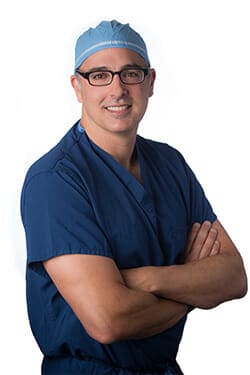Cosmetic vs. Functional Rhinoplasty

The term rhinoplasty can be used to describe numerous procedures for the nose. Oftentimes we think of rhinoplasty as an elective cosmetic procedure; however, some people undergo rhinoplasty for medical reasons, too.
Take a moment to learn more about the differences between cosmetic and functional rhinoplasty from Dr. Joshua Greenwald.
What Does Cosmetic Rhinoplasty Accomplish?
The goal of cosmetic rhinoplasty is to improve the appearance of the nose by changing one or more of its features. Cosmetic rhinoplasty can modify the shape, angle and/or symmetry of the nose. It can improve the appearance of the nostrils, bridge and/or tip. Often, patients find that improving the appearance of the nose helps to balance out the rest of the facial features, like the chin, mouth and eyes, so they look more harmonious.
Are You a Good Candidate for Cosmetic Rhinoplasty?
You may be a great candidate for cosmetic rhinoplasty if you want to correct any of the following:
- An oversized nose
- An asymmetrical or crooked nose
- Overly wide nostrils
- Asymmetrical nostrils
- A bump or dip on the bridge of the nose
- An upturned, downturned or bulbous nasal tip
What Does Functional Rhinoplasty Accomplish?
The goal of functional rhinoplasty is to correct structural or anatomical problems in the nose that interfere with proper breathing. While cosmetic rhinoplasty is something you may desire, functional rhinoplasty is something that you need in order to breathe normally. It may be considered “medically necessary” or even reconstructive, based on the circumstances of the individual case.
Are You a Good Candidate for Functional Rhinoplasty?
You may be a good candidate for functional rhinoplasty if you have:
- A deviated septum. The septum is a piece of cartilage separating your nostrils. The septum may be naturally misaligned or “deviated,” or it may become misaligned due to an accident or trauma to the nose.
- Enlarged turbinates. Turbinates are shell-like structures that warm and humidify air as it moves through the nasal passages. If these turbinates become swollen or enlarged, it can interfere with the normal flow of air through both sides of the nose.
- A nasal fracture or broken nose.
Cosmetic and functional rhinoplasty are not mutually exclusive. Some patients choose to have structural issues corrected while also improving certain aesthetic features of their nose.
If you are interested in having rhinoplasty for cosmetic or functional purposes, Dr. Greenwald would be happy to consult with you. Please contact one of our New York offices today to request an appointment with him.
